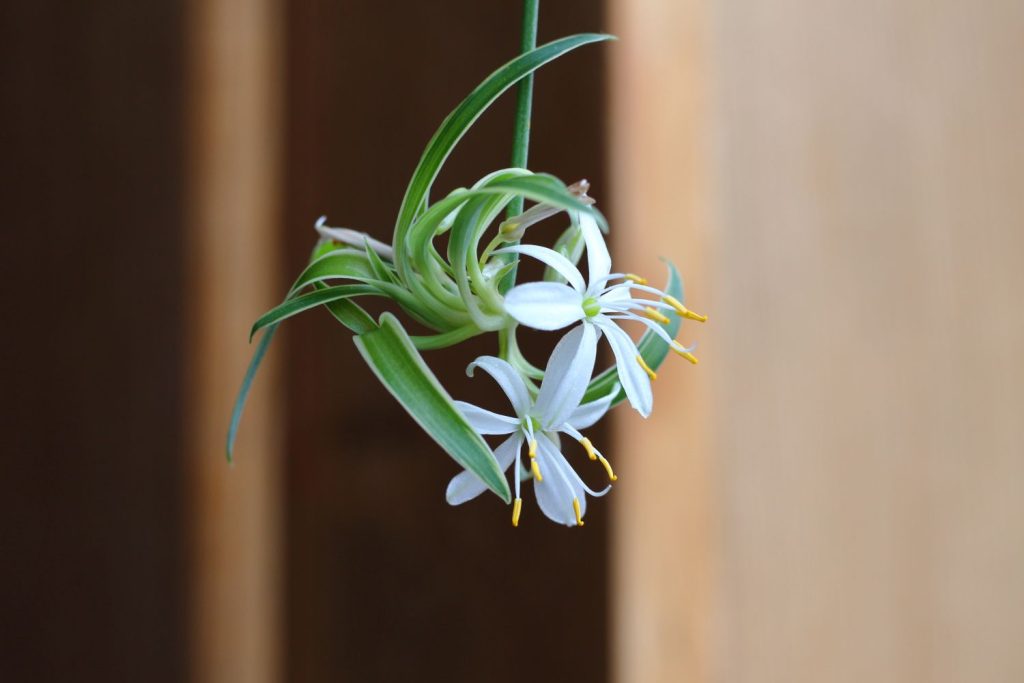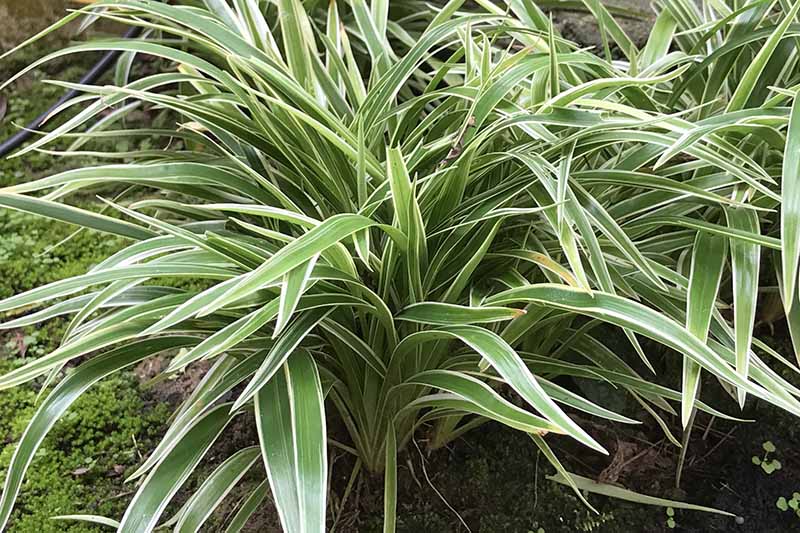I have been growing different kinds of vegetables as a hobby in my spare time for a long time. This is what ultimately led me to study horticulture. Looking at plants grow from seeds to fruits is very interesting to me. I love being able to eat the fruits of my labor. Favourite fruit: Strawberries and cherries Favourite vegetable: Potatoes, tomatoes and garlic.
Spider plants are some of the least demanding houseplants. Practically indestructible, these plants are ideal for beginners or for those of us who simply prefer easy-care plants.
Common spider plants (Chlorophytum comosum) are decorative houseplants that look great in hanging baskets. Find out everything you need to know about spider plants and see some of the most beautiful types of this beloved houseplant.
Spider plants are a popular and easy to care for houseplant. But did you know that spider plants actually grow wild in parts of Africa? In this article, we’ll explore everything you need to know about spider plants in their natural habitat.
An Overview of Spider Plants in the Wild
The botanical name for spider plants is Chlorophytum comosum. They are native to tropical regions of West Africa like Cameroon and parts of South Africa. In these regions, spider plants grow wild in the forest undergrowth near streams and rivers.
Spider plants thrive in the warm humid environment of the rainforest floor. Here they receive dappled sunlight filtering down through the upper canopy. Their long strap-like leaves grow in clumps close to the ground spreading by runners. The runners develop plantlets, allowing the spider plant to propagate itself.
Growing Conditions for Wild Spider Plants
To mimic the natural conditions of wild spider plants, there are some key factors to consider:
Light
Wild spider plants grow best in medium or indirect light Direct hot sunlight will scorch their leaves Dappled shade that mimics the rainforest environment is ideal.
Temperature
As tropical plants, wild spider plants like warm conditions between 60-80°F. Temperatures below 50°F can damage the foliage.
Humidity
The humid rainforest environment provides moisture spider plants love. Recreate this with indoor humidity around 50-60% if growing spider plants indoors.
Soil
Wild spider plants grow in moist humus-rich soil, Use a well-draining potting mix amended with compost Keep soil consistently moist but not waterlogged
Water
Spider plants need evenly moist soil. Water whenever the top inch of soil dries out. Heavy clay soil that retains too much moisture can rot the roots.
By mimicking the warm, humid rainforest floor, you can grow happy, healthy spider plants similar to how they thrive in the wild!
Fun Facts About Wild Spider Plants
Here are some fascinating tidbits about spider plants in their native habitat:
-
Spider plants grow wild across tropical Africa and parts of Asia. The most diversity is found around the Congo Basin region.
-
In Swahili, spider plants are called “mbabari ya nyoka” which translates to “snake plant” due to their long leaves.
-
The leaves can reach over 3 feet long in mature wild specimens. Indoor spider plants rarely achieve this size.
-
In Africa, spider plant roots are used for traditional medicines. The San people use the roots to treat chest pain.
-
Spider plant sap is applied topically in parts of Africa to treat skin wounds and rashes.
-
Spider plants are called “air plants” in areas of Africa because they are thought to purify indoor air.
Growing Wild Spider Plants at Home
Want to grow your own wild spider plant at home? Here are some tips:
-
Source spider plant runners or plantlets from a friend or local greenhouse. This is easier than starting from seed.
-
Use an organic, peat-free indoor potting mix amended with compost or worm castings. This mimics the humus-rich tropical soil spider plants love.
-
Water frequently to keep soil moist. Allow potting mix to dry out slightly between waterings.
-
Mist leaves regularly to boost humidity. Grouping plants together also helps increase humidity.
-
Situate plants in bright indirect light near an east or west facing window. Protect from hot direct sun.
-
Prune off any damaged leaves or dead growth to encourage lush new foliage.
-
Feed monthly during spring and summer with a balanced liquid fertilizer diluted to half strength.
With the right care, you can have your own flourishing wild spider plant as an indoor houseplant! It’s fun to grow these classics plants the way nature intended.
In Summary
Spider plants grow wild across parts of tropical Africa and Asia. They thrive in warm, humid rainforest conditions with indirect sunlight and moist, humus-rich soil. At home, aim to recreate these native growing conditions for happy, jungle-like spider plants. With the right care, you can cultivate an indoor spider plant that mimics its wild cousins.
Spider plant flowers
Spider plants can flower almost all year if they are kept in a spot that gets enough light every day. The hermaphrodite flowers are white, star-shaped and form clusters of one to six on an inflorescence. The flower stalks can be up to 1 meter long and make the spider-like structures that hold the stem down in a strong arch. This ensures that the spider plant babies can reach the ground and take root. If you want lots of these spiderettes, be sure to care for your spider plant correctly. Typically, most of the flowers of indoor spider plants do not fully develop. But when they do, the plant also makes the rarely seen capsule fruits, which have three black seeds inside each one.

Hawaiian spider plant (Chlorophytum viridescens)
This spider plant species is similar to Chlorophytum comosum. It has long, narrow leaves that are variegated at first, but as they age, they lose their patterns and turn green all over. Hawaiian spider plant flowers and offshoots are identical to those of the common spider plant.
Tip: The spider plant variety Chlorophytum laxum also looks like Chlorophytum comosum, but it is much rarer.
Spiderplant in the wild
FAQ
Where do spider plants grow naturally?
Is spider plant toxic to humans?
What part of a spider plant is edible?
What is the lifespan of a spider plant?
- The Ultimate Guide to Growing Strawberries in Raised Beds - August 8, 2025
- No-Dig Garden Beds: The Easiest Way to Grow a Beautiful Garden - August 6, 2025
- How to Protect and Preserve Wood for Raised Garden Beds - August 6, 2025

